Advertisement
The Quest To Get Louisa May Alcott's World Just Right In 'Little Women' — Down To The Pink Ice Cream
"Little Women," the new movie inspired by Louisa May Alcott’s beloved novel, is set when and where she wrote it — in mid-1800s Massachusetts. The book and film are loosely based on Alcott's time in Concord with her three real-life siblings and transcendentalist parents. Director Greta Gerwig and her production team went to great lengths to ensure a myriad of historical details would look period perfect on screen — from the props to the locations to the food.
Ah yes, the food.
Pay attention and you'll notice the subtle presence of edible artistry at a beach picnic, a wedding, a birthday party. A full-blown tableau arrives soon after a pivotal Christmas scene where Alcott's characters Meg, Amy, Beth and Jo March wake up to find a homey breakfast of eggs, bangers, pork belly and poached pears.
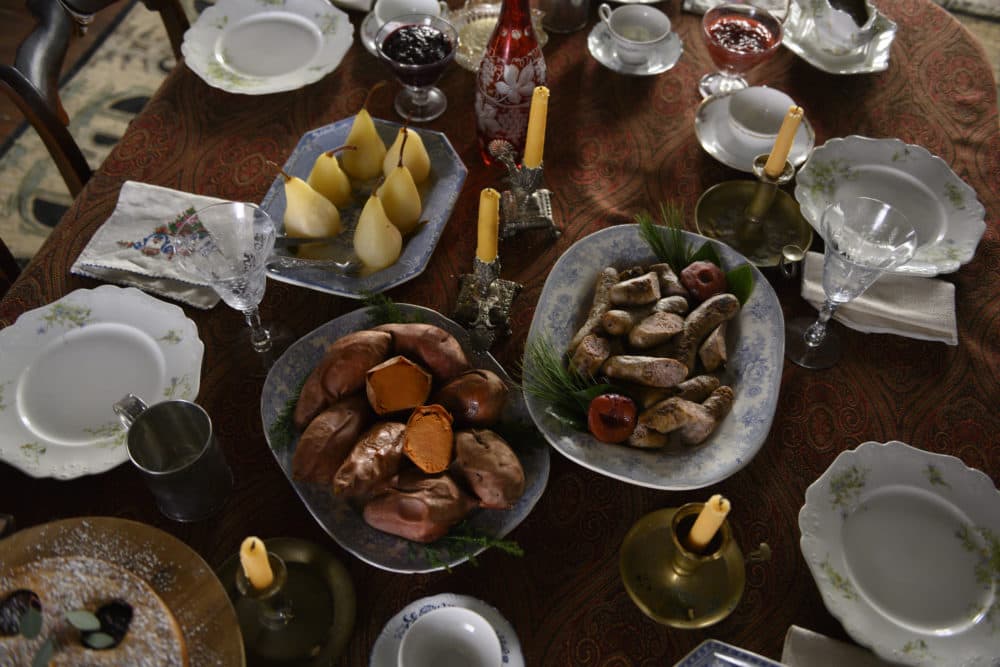
As they’re about to dive in, Marmee (their mother) suggests they pack up the meal and deliver it to a poor woman living nearby with hungry children.
When their wealthy neighbor, Mr. Laurence, learns of this selfless act he rewards the girls’ kindness with a surprise of his own. Back at home, the March sisters discover an eye-popping spread of delicacies heaped high on silver platters.
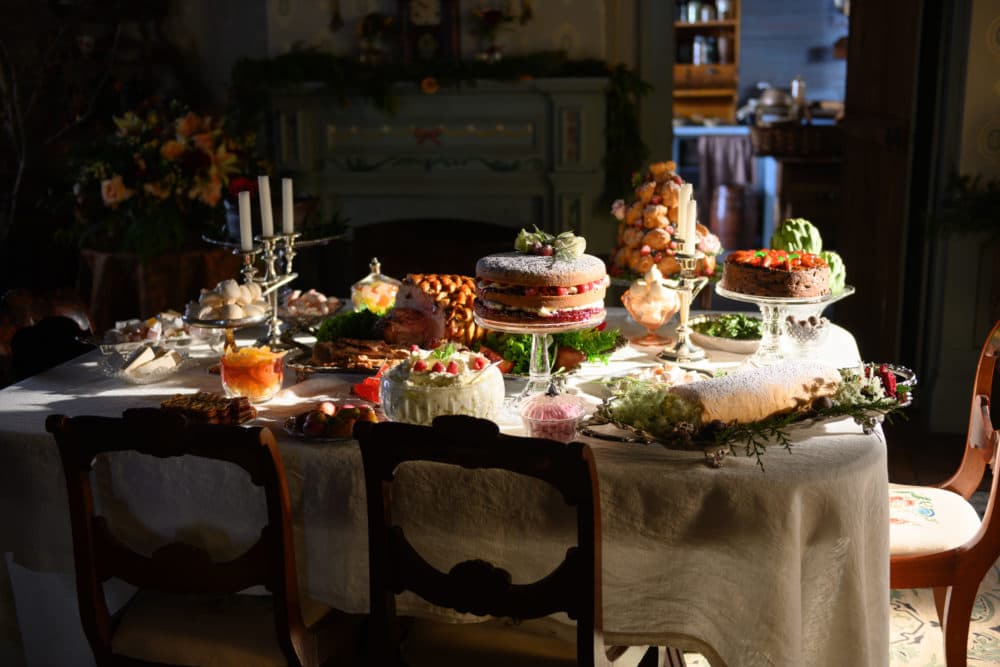

“From the get-go the number one priority for this Christmas feast from the Laurence house was there had to be ice cream and it had to be pink,” says food stylist Christine Tobin. It had to be pink, because it was pink in Alcott's book.
Tobin managed a glorious mountain of pink peppermint on set, replacing its scoops as they melted in a punch bowl. She used 75 gallons from the Puritan Ice Cream Co. in Boston that's been making it for over 100 years.
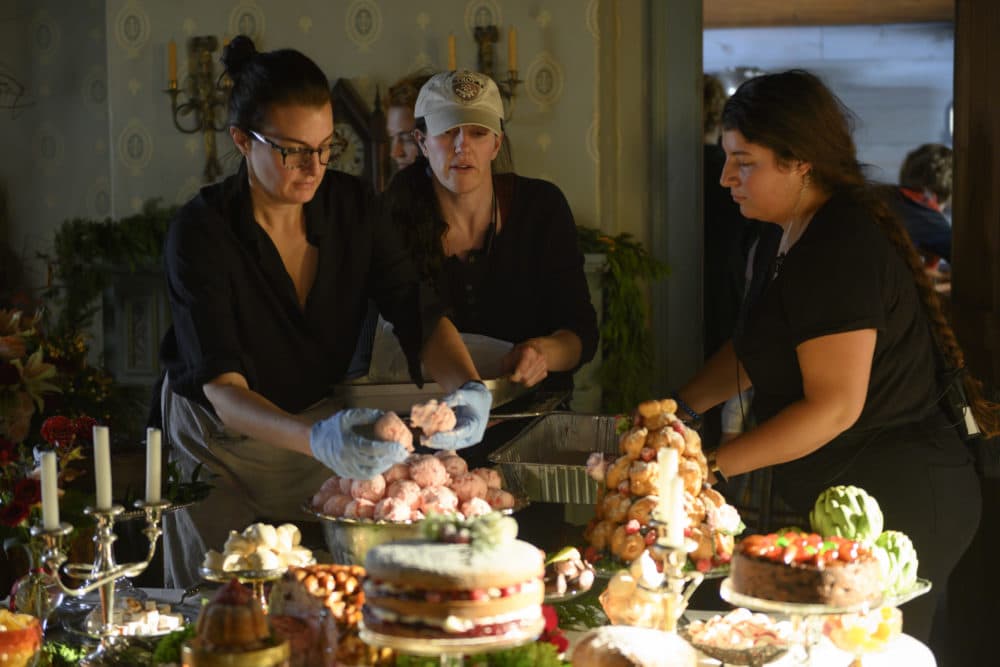
Tobin sourced, researched, designed, decorated and prepared all of the period-appropriate food we see in “Little Women.” Much of it came out of her Roslindale kitchen. She showed me how she cranked out dozens of basic molasses cookies for the movie the way 19th century families like the Marches and Alcotts did, using flour, butter, eggs, baking powder, sugar, ginger, cloves and cinnamon.
For the movie she perfected popovers, raspberry hand pies, fluffy biscuits and shortcake. The stylist found scones, brambles and time-consuming rustic and artisanal breads at local bakeries like Fornax and Clear Flour.
She dipped orange slices in chocolate and rolled them in granulated sugar, “because the March girls loved their sugar.” And Tobin re-created savory vintage dishes including Eggs a la Dauphine.
Cookbooks and art books covered her dining room table the afternoon of our visit. While developing the film’s menus, Tobin flipped through their pages for inspiration. She also relied on Pinterest and websites to develop recipes that were beautiful but also conveyed emotion and care because “food is love,” Tobin said.
Advertisement
“What’s interesting looking at all those old recipes from that era, there’s really no difference from the ways we’re baking and preparing food now, farm-to-table,” she added.
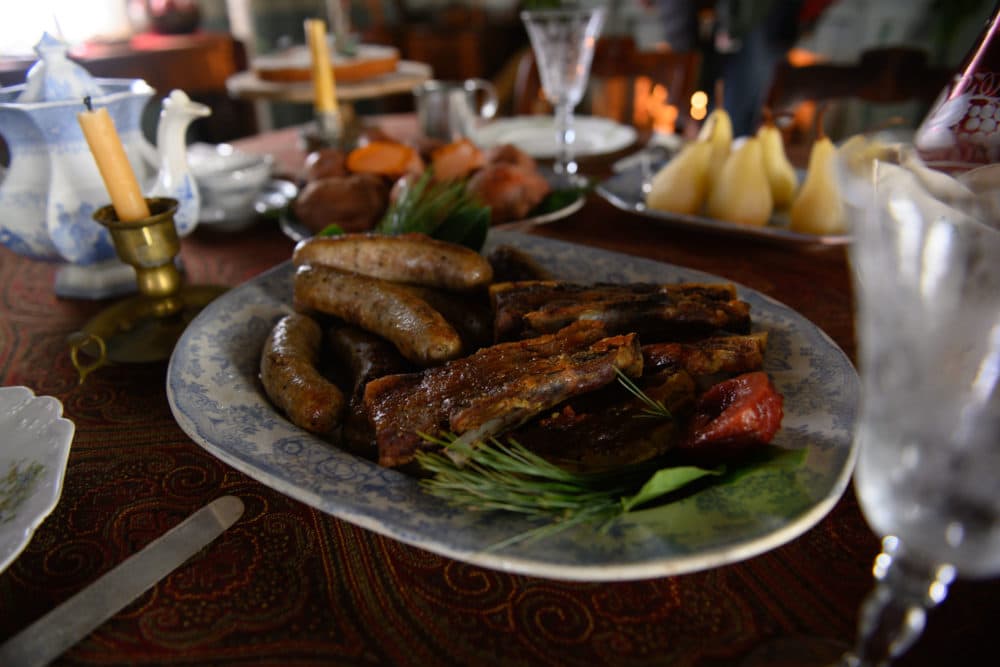
Tobin has only used fresh, real food for the 16 productions she’s worked on, including “Black Mass,” “American Hustle” and “Labor Day.” For “Little Women” Tobin worked closely with Gerwig, the producers and Cambridge-based prop master David Gulick to make every morsel “just so.”
They learned the Alcotts — hence the Marches — had fruit trees and a huge garden on their property. So Tobin went to Allandale Farm to get New England apples and dug through compost to find overripe fruit to place around the set’s kitchen. Her team pickled plums, veggies and limes months before filming even began.
“You had to really then research and make sure those foods that were on the table would have been brought in or taken out of jars because they were preserved,” Tobin said.
She also explained how what the characters eat — even their bread — illustrates class differences between the Marches and the Laurences.
“They had the white flour,” she explained, “whereas for the March family it was the dark, wheat flours, whole grains, because of their financial means.”
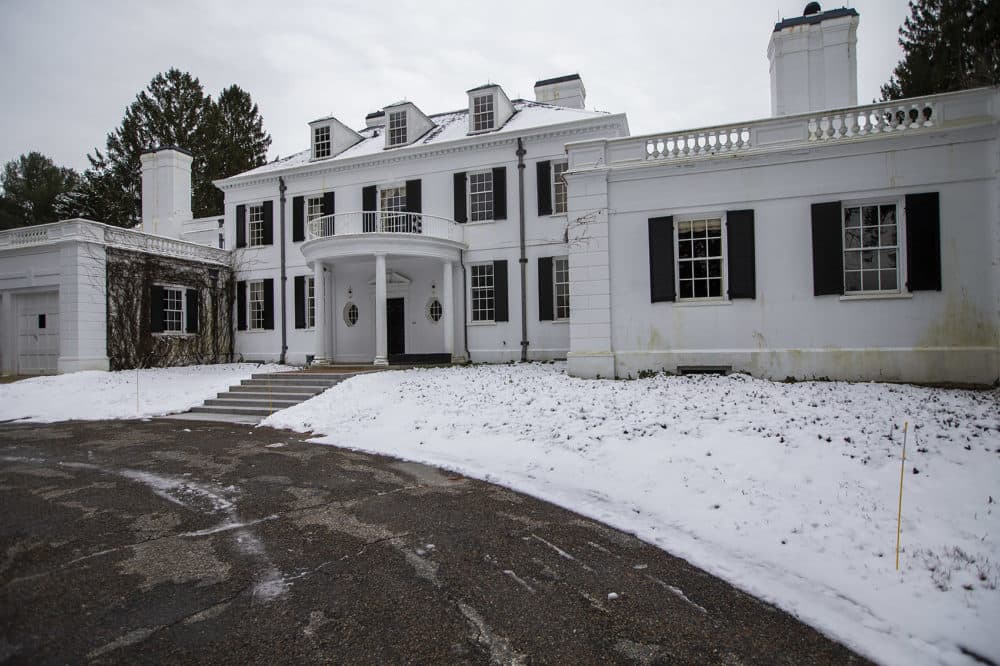
This attention to detail meant a lot to Tobin, who’s also a fan of Alcott’s book. She's reading it now with her young daughter. Together they gathered fallen leaves and acorns on an autumn walk to decorate Marmee’s birthday cake.
“We all wanted the movie to feel very real,” “Little Women” producer Amy Pascal told me. She also created the 1994 film adaptation starring Winona Ryder.
Pascal said there’s a lot of cooking and food in Alcott’s book “because it’s something that’s also important to women.” It helps tell the story about being female in the 19th century.
For the Hollywood veteran, laboring over historically accurate touches makes the world we see on screen believable.
“Movies work on such an emotional level — when they work,” Pascal said, “and all of these things are things that you experience cognitively while you're watching a film. So when someone doesn't think about all of these details, movies just don't feel as rich.”
Pascal believes the movie also needed to be geographically correct.
“It was critical that it be filmed in Massachusetts, that’s a gigantic part of what the movie is about,” she said, “and we needed to capture it because the movie is also about Louisa May Alcott, and Louisa May Alcott’s life is here.”
Film crews transformed more than a dozen historic properties in places like Ipswich, Boston and, most importantly, Concord, where Alcott lived. She wrote “Little Women” in 1868 at her home known as Orchard House. Today it survives as a museum. The filmmakers couldn’t shoot there, so they painstakingly constructed a partial replica of the exterior a few miles away as a stand in.
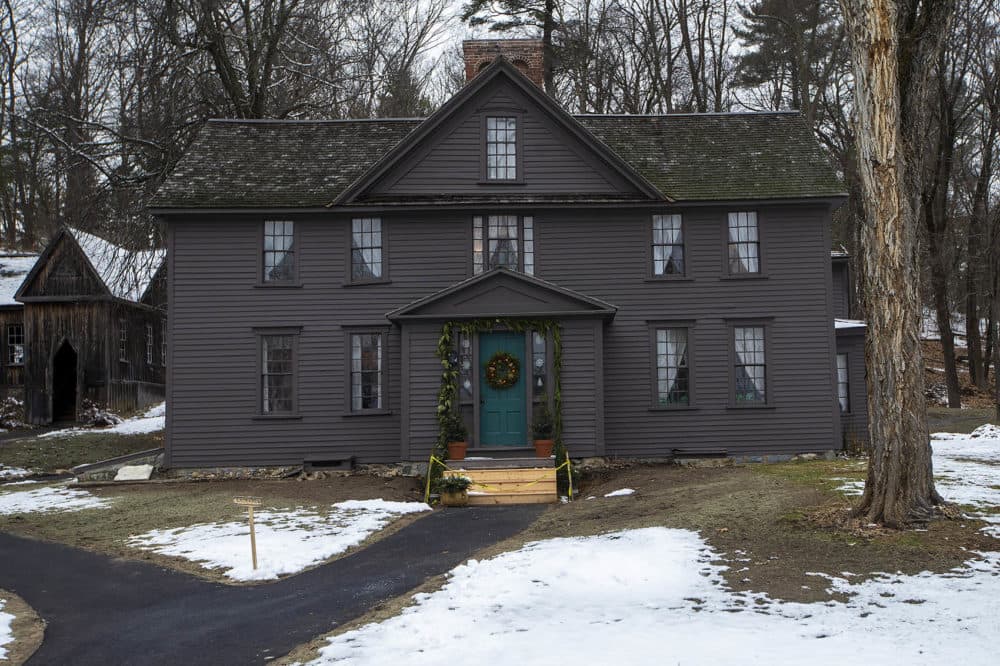
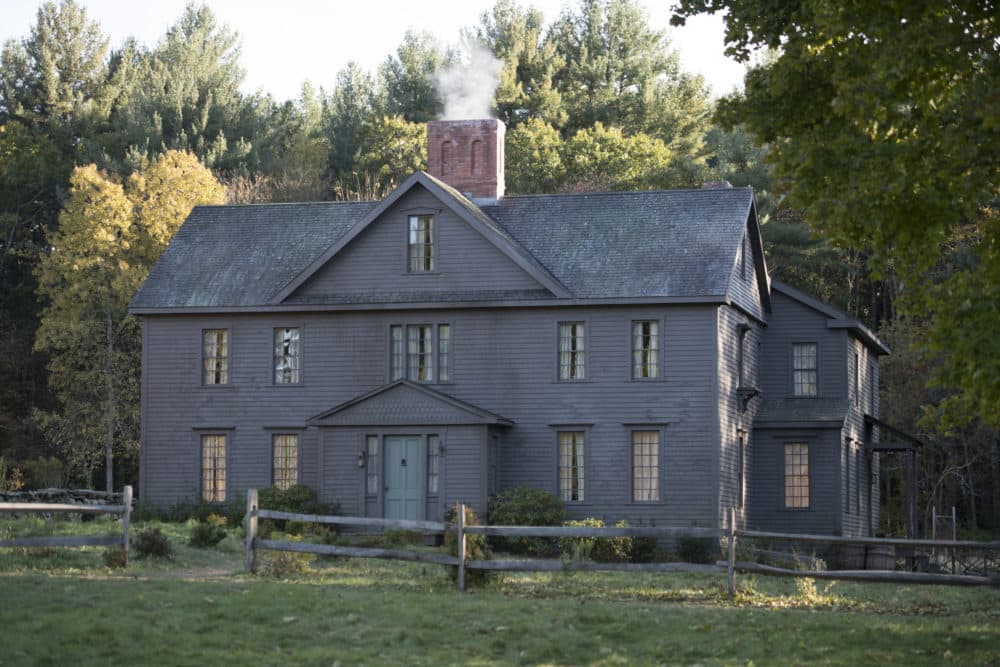
Adam Roffman, who oversaw continuity with the production's art department as on-set dresser, said it took eight to nine months to build. The interiors were reproduced in an enormous Franklin warehouse about an hour away. He recalled how Greta Gerwig wanted every set and prop to look lived in and of its time — the lace curtains, bedding, tableware and furniture. The crew scoured Brimfield Antique Flea Markets for props and decorations.
The creative team even used real candles and vintage oil lamps for their natural glow and the sooty smudges they left on the wallpaper. For Roffman it was an unprecedented amount of old-school lighting, and he was in charge of extinguishing all of the candles after every take so they wouldn’t burn down and cause continuity errors.
“I’ve done romantic dinner scenes or weddings that would have some candles, but I’ve never done three months every day of candles, candles, candles,” the industry veteran said, laughing. “It was quite a big job and now I’m mentally prepared for the next time I work on a film set in the 1800s.”
According to Roffman, “Little Women” decorator Claire Kaufman, production designer Jess Gonchor and the art directors (Sean Falkner, Chris Farmer, Bryan Felty) spent a lot of time at the actual Orchard House “speaking with all of the experts on Alcott and her family, getting as much information, doing as much research as possible, to get the house right.”
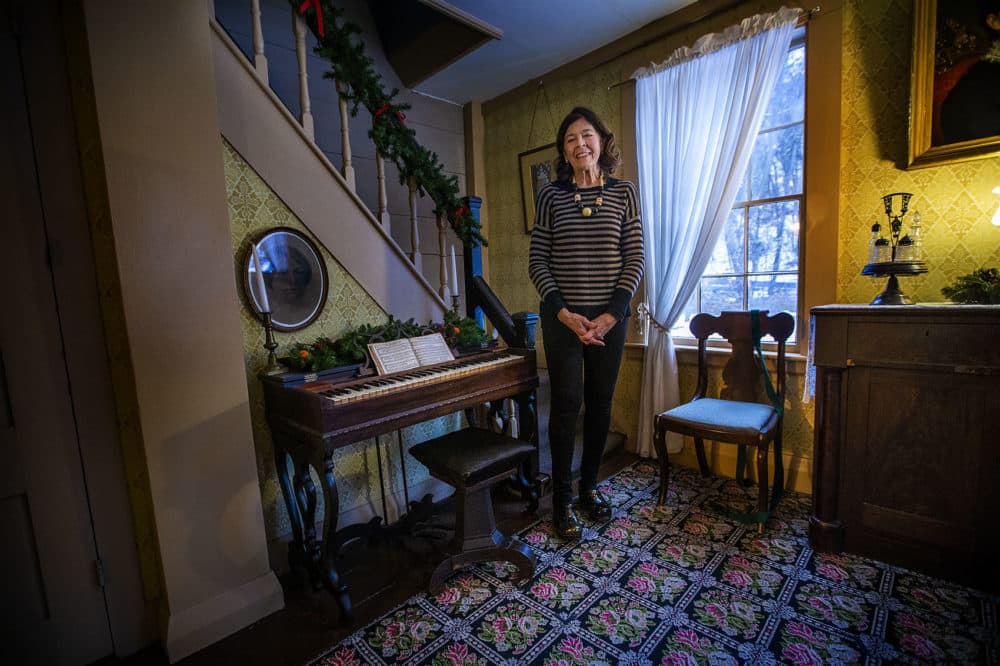
Jan Turnquist, Orchard House director of 20 years, was one of their advisers.
“This house holds such emotion for people,” she said standing in a room filled with Alcott’s actual furniture, artwork and piano. “The book holds such emotion for people. Now, this movie will hold so much emotion for people. It connects with their daily lives.”
Turnquist fielded a slew of questions from the people who made "Little Women” and said she even gave production designer Jess Gonchor architectural drawings of the house and its period paint colors.
At the museum, Turnquist talks to a steady stream of discerning Alcott fans and thinks all of this research will pay off. She shared how one person mused that visiting Orchard House could almost be like going to Hogwarts after seeing “Harry Potter.”
“But Hogwarts is imaginary, you can create it, but there is no real Hogwarts. This is the real thing. So to have that authentically recreated means everything to many, many people.”
Turnquist included. She’s already seen the movie a few times and is preparing her staff for a flood of “Little Women” tourists after the film opens Christmas Day.
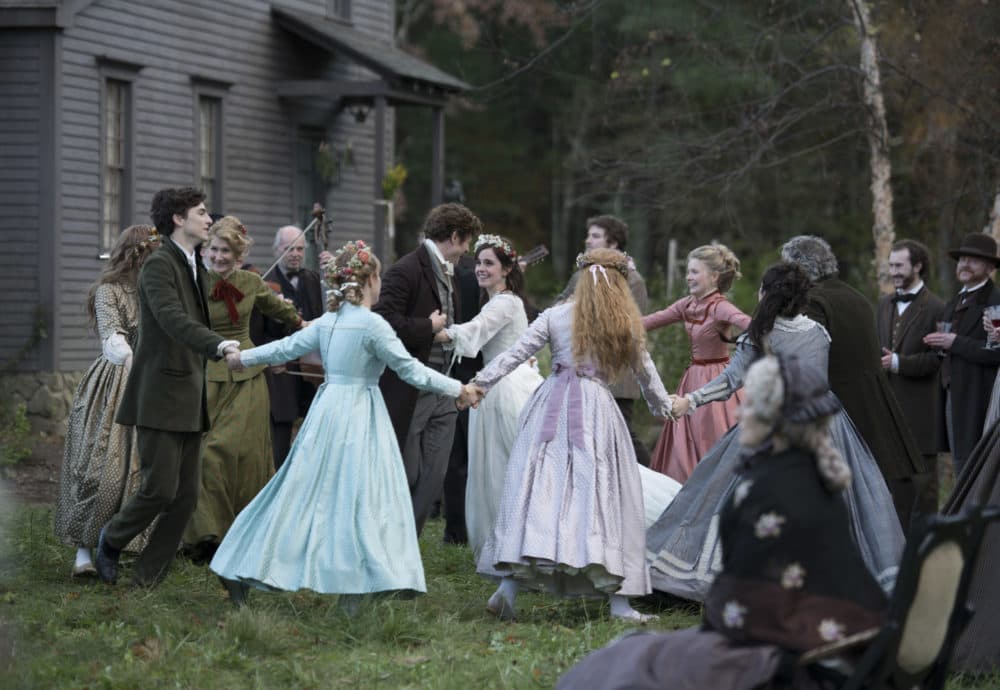
For folks hoping to dive even deeper into the production’s other historical efforts — including the dance scenes — there’s a companion book. It contains a few recipes care of food stylist Christine Tobin. The Massachusetts Film Office also produced a map of the historic locations used in the film.
This segment aired on December 24, 2019.
